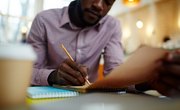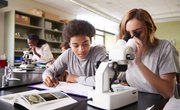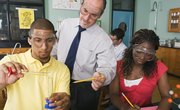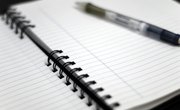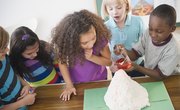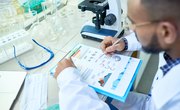Middle-school students are just beginning to use experimentation to observe and test scientific theory. Usually, sixth-grade science lessons introduce the scientific method as the standard procedure for the development of a lab report for class experiments. Models vary, but most basic versions of the scientific method include six steps, with additional steps added in the event of an experiment flaw. Use activity sheets to help students discover and understand the construction of the scientific method.
What Comes First/Next Worksheet
In order to carry out a successful scientific experiment, each step must be carried out in strict order. In other words, you cannot draw conclusions without first analyzing your data. Provide students with a worksheet that lists each step of the scientific method out of order. Instruct students to cut out each step, then glue them onto another sheet of construction paper in the order they should be performed. Students should not number the steps. Next, students must draw arrows from one step to another, demonstrating the addition of an extra step if the experiment is flawed.
Missing Link
Provide students with a worksheet listing several imaginary lab reports for simple experiments. Each report should contain the steps scientists used; however, steps should not be labeled. Each report should have one step missing. Students must review each report and identify the missing scientific-method step. For example, one experiment could test what happens when you mix green and blue food coloring. The report lists the Question/Problem, hypothesis, materials, procedure, and conclusions, but fails to mention the data and observation step.
Create Your Own Experiment
Students can use their imagination combined with logic to come up with their own scientific experiments in an attempt to problem-solve. Provide students with a worksheet that outlines a basic problem they may encounter every day. For example, Jim claims most people like vanilla better than chocolate. Sam claims most people like chocolate better than vanilla. How can you stop them from arguing? Students must develop a hypothesis for an experiment. They must detail the outline of the project. Who would be tested? What would be used for testing? What controls would need to be used? What kinds of observations might help to predict the conclusions? When students have completed their worksheets, discuss a proper scientific method for research so students can see where their own experiments may have succeeded or may have been flawed.
Related Articles
References
Writer Bio
Diane Todd holds a Bachelor of Arts in mass communication from North Carolina State University and is a former video and web producer for a North Carolina multimedia agency. She also spent several years as a media specialist/graphics designer for the Cumberland County school system in Fayetteville, N.C.


